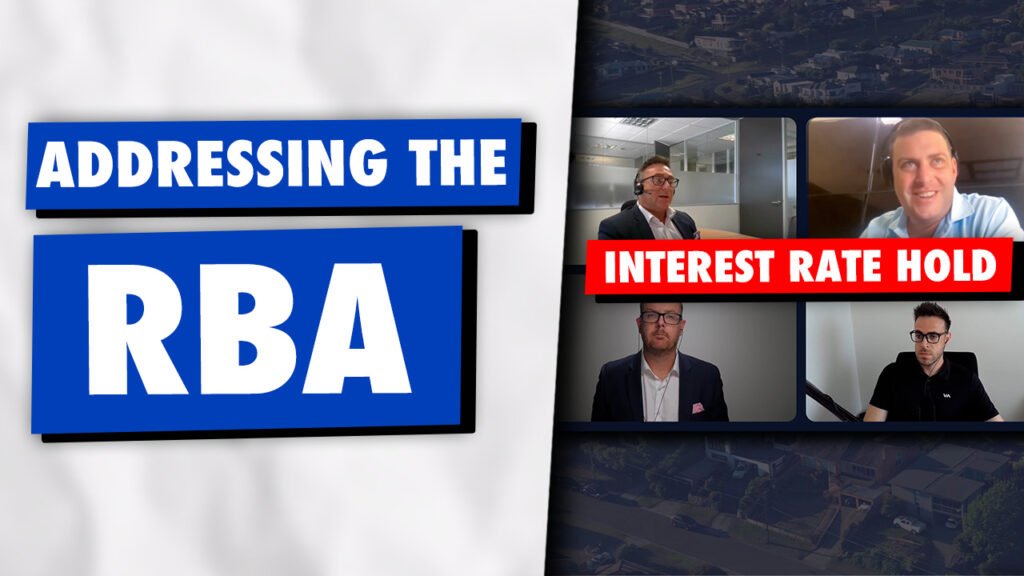Should You Refinance Your Home Loan?
Home loan terms are regularly 25 to 30 years long – but that doesn’t mean you should stay locked in to the same loan for the whole time.
Switching your current loan for a new one with better conditions can help you free up equity for new investments, reduce your repayments, and even consolidate other, higher-interest debts into one loan.
Knowing when to refinance, though, is key. Changing home loans comes with its own risks and costs, so it’s important to think carefully before making a decision. In this article, you’ll learn about the pros and cons of refinancing, when refinancing can be a good idea, and how the process of refinancing works.
What Is Home Loan Refinancing?
Home loan refinancing is when you replace your current home loan with a new home loan (generally by switching to a different lender).
Like taking out your first loan, you’ll have to apply to the new lender for a mortgage, which involves getting a property valuation. If they approve your application, they’ll buy out your existing lender, and all subsequent mortgage repayments will be made to your new lender under your new loan conditions.
Can I Refinance With the Same Lender?
Yes, you may be able to refinance with the same lender. If you meet certain conditions, like having more equity or a better credit score than when you first took out your mortgage, you might be able to get more favourable rates or better conditions.
Benefits of Refinancing Your Home Loan
There are plenty of reasons to consider refinancing your home loan. Most home buyers find that, after a few years with their current mortgage, they’ve unlocked more equity and have improved their credit score – which means refinancing could help them reduce their repayments or start investing.
1. Refinancing Can Help Reduce Mortgage Repayments
One of the most common reasons to refinance is the potential for lower repayments. The interest rate on your mortgage is calculated based on a variety of different factors, like current interest rates, loan term (shorter means lower rates than longer), repayment frequency (more often is better than less), debt-to-income ratio (a DTI over 6 can mean higher rates), loan-to-value ratio (a higher LVR means higher interest rates), and your credit score.
If any of those factors have changed since you took out your first mortgage, refinancing could be a good way to reduce your repayments.
Here’s an example. Let’s say you took out a mortgage at 90% LVR and a loan term of 30 years. You bought a property worth $450,000 with a $50,000 deposit. Because your LVR was above 80%, your original loan had a fixed interest rate of 4.75%. You also decided on monthly repayments.
Now, three years later, you’ve accrued enough equity in the property to take out a new home loan at 80% LVR. That means you can refinance to a lower interest rate of 3.9%. Under your original loan, you were paying $2,345 per month; under your new loan, you’re paying $2,120 per month – that’s a saving of $225 per month or $2,700 per year.
And what if you switched to weekly repayments as well? You’d pay $490 per week ($1,960 per month), leading to overall savings of $385 per month or $4,620 per year.
Refinancing can be a powerful tool, especially if you’ve accrued equity in your property or have the capacity to make more frequent repayments.
2. Refinancing Can Unlock Equity
You can also use refinancing to unlock or release the equity you’ve accrued in your property. Equity is the difference between your property’s market value and your loan – for example, if your property is currently worth $450,00, and your mortgage principal is $200,000, you have $250,000 in equity.
This equity is essentially value that’s tied up in your property, which means you can, under certain circumstances, ‘unlock’ it and use it to purchase things. For example, you might want to use your equity to fund home renovations (which, in turn, could help create more equity by raising the overall value of your home). You could also use equity for purchases like medical procedures or vehicles.
To access your equity, you’ll need to talk to your lender. They’ll conduct a valuation of your home, then determine how much equity you can access. Keep in mind that refinancing to unlock equity is no different to taking out a normal mortgage – refinancing to an LVR of higher than 80% may attract higher interest rates and lenders mortgage insurance (LMI).
Using the previous example, let’s say you wanted to borrow up to 80% of your property’s value when you already have $250,000 in equity. Eighty percent of $450,000 is $360,000, and $360,000 minus your current loan ($200,000) is $160,000. That means, if you refinanced at 80% LVR, you could unlock $160,000 in funds that you could use for other purchases.
Keep in mind that your lender will ask you what you’re using the funds for. You should generally only access your equity for two reasons:
- If your situation is critical (for example, if you need a medical operation)
- If you’re reinvesting the equity (for example, into improving your property)
It’s also worth remembering that using equity for purchases is not like using cash. The price of whatever you purchase will be added to your home loan and paid off over the term of the mortgage. For a small purchase, like a car or a holiday, repayment over a mortgage-length term (20–30 years) can result in paying much more interest on that purchase than you would have otherwise.
3. You Can Consolidate Multiple Debts
Refinancing can also be used to consolidate your debts into your home loan. This means adding any other loans you have (like a car loan or credit card debt) onto your mortgage and closing the old accounts.
There are a few benefits that can make consolidation worthwhile. Firstly, streamlining several different loans into one loan means repayments are easier to keep track of – you just have to pay back the one loan, rather than keep track of several loans and lenders.
Secondly, home loans have a much lower interest rate than personal loans. For example, your credit card might have an interest rate of 20%, whereas your home loan might have an interest rate of 4.75%. If you have significant personal debts, consolidating them into your lower-interest home loan could help you save on repayments.
Debt consolidation does come with risks, though. Just like purchases made through equity, adding debts onto your home loan means you’ll pay them off over your mortgage term – which will probably result in you making more repayments than you would have otherwise.
Consolidation will also affect your LVR. If you had a $450,000 property with equity of $90,000, you’d have an LVR of 80%. If you added $50,000 of personal debt to your mortgage, you’d have an LVR of 82%. With an LVR of more than 80%, your interest rate would likely increase, and you’d also have to pay LMI. If you do decide to consolidate your debt, make sure it doesn’t impact your home loan rates.
4. Equity Can Be Used for Investment
Although accessing the equity in your property has risks, it can also be used to help you build wealth. For example, if you used your equity to renovate your home, the capital gains you make could outweigh any financial loss from refinancing.
Equity can also be used to buy investment properties. If you choose your investment property correctly, you can pay off that property’s mortgage through rent – while also building your wealth through capital gains over time.
There are three ways you can use your current property to buy an investment property:
- Lump-sum equity access. This involves accessing your equity and using it as a deposit on an investment property.
- Getting approval for a line of credit. A line of credit works like a credit card – once you’re approved, you can draw down on your credit until you reach your pre-approved limit (which might be up to 80% of your property’s value, depending on lender approval). You don’t need to get approval for each drawdown, and you only pay interest on the amount of credit you actually use.
- Cross-collateralising your property. Cross-collateralising involves using your current property and your investment property as collateral for the loan on your investment property. This is very different to drawing down equity and comes with a number of complexities. You should talk to your financial advisor or mortgage broker before considering cross-collateralisation as an option.
Detriments of Refinancing Your Home Loan
Like all debt, refinancing your home loan comes with its own set of risks. Make sure you give each detriment thought before moving forward with refinancing.
1. Refinancing Impacts Your Credit Score
When you refinance, your credit score will be impacted. As part of the loan application process, lenders will perform a hard credit check (in the same way they do for normal mortgage applications).
You can minimise the number of hard checks performed by refinancing through a mortgage broker. Your broker will help you find the most suitable lending option, improving the chances of your loan application being accepted by that lender.
Your existing loan account will also be closed, which temporarily impacts your credit score.
2. Refinancing Costs Money
The actual process of refinancing your home loan also costs money. Your current lender and the lender you’re switching to both have administrative fees that they charge, which include:
- Discharge fees (paid to your current lender to close your existing loan account)
- Application fees (paid per new loan application)
- Valuation fee (paid to your new lender to valuate your property)
- Land registration fees (paid to your current and new lender to transfer your debt from the former to the latter)
- Break fees (only charged if you refinance during a fixed-rate home loan)
- Other fees (includes things like ongoing fees for packaged homes and LMI)
Depending on your lender and property, refinancing typically costs between $800 and $2,000.
When You Shouldn’t Refinance
Whether you should or shouldn’t refinance is a question you should discuss with your financial advisor or mortgage broker. There are, however, some situations that make refinancing a bad idea.
When You Have Less Than 20% Equity
If you have less than 20% equity in your property, avoid refinancing unless there is a good reason to do so. Normally, your interest rate won’t improve much (if at all) if you have less than 20% equity, and you’ll also have to pay LMI. You also probably won’t be able to unlock any equity.
When Interest Rates Are High
If you’re thinking about refinancing, look at the current interest rates. Are they higher or lower than your current interest rate? If they’re higher, refinancing could result in your repayments going up. It’s important to consider whether the benefits of refinancing outweigh increased repayments.
When You’re Planning to Sell
Planning to sell your property in the next few years? You need to calculate whether the savings from refinancing will exceed the fixed costs. Often, it’s not worth refinancing if you’re going to sell in the next four years or so. Of course, this only applies if you’re seeking refinancing for reduced repayments rather than refinancing to unlock equity.
Refinancing With Big Banks vs. Digital Banks
When you’re researching new home loan options, it’s important to find a lender that gives you more affordable interest rates, low refinancing costs, and favourable loan conditions. You also need to make sure your application can get approved, preferably on your first try – each refinancing application will cost you up to $1,000 to lodge, and will also negatively impact your credit score when your new lender performs a hard credit check.
Refinancing with the Big Four (ANZ, CBA, NAB and Westpac) and other traditional banks can be the right approach for some people. If you feel comfortable with a particular institution and have a strong credit history and a stable, medium-to-high income from full-time employment, then there’s no reason not to refinance with a bank.
In many cases, though, a digital bank (online lenders without physical branches, like Aussie, tic:toc, ubank and Athena) can be a better choice. Digital banks normally have lower interest rates, faster loan approval times, and lower fixed refinancing costs. They’re also more open to self-employed borrowers, borrowers with high LVR or DTI, and borrowers with suboptimal credit scores. If you’re refinancing as an investor or to reduce your repayments, these traits can make digital banks a good choice.
It’s worth noting that both digital banks and traditional banks are heavily regulated. Digital banks are required to have an Australian Credit Licence, must comply with ASIC and ACCC regulations, and adhere to relevant legislation like the National Consumer Credit Protection Act 2009 (Cth) and the Privacy Act 1988 (Cth). Both types of bank are exceptionally safe, although traditional banks are also regulated by APRA, which adds a layer of legislative security.
How Does Refinancing a Home Loan Work?
Here’s a step-by-step guide to the refinancing process.
- Do your own research. Before you do anything else, learn about refinancing by reading guides like this one. Having a basic understanding of the pros, cons, and risks will make things easier when you talk to your lender or broker. You’ll also need to work out why you want to refinance, and, if you’re looking to access equity, how much you want to draw down.
- If you have a financial adviser and/or mortgage broker, book a meeting to get their professional advice. Refinancing is extremely complex, so it’s important to get recommendations that are tailored to your individual situation. Make sure you tell them why you’re refinancing – if they know what your ideal outcome is, they can help you find the best way to get there.
- If you’ve spoken to your broker, they’ll research lending scenarios and present you with an option that’s right for you. If you don’t have a broker, you’ll need to research new loans yourself. This step will also involve calculating your repayment capacity and accounting for any potential risks.
- Apply for your chosen loan. This is a multi-stage process that involves a number of different approvals.
- If you are approved for your new loan, your broker and/or new lender will contact your current lender to begin the loan changeover process. This is also when a number of fixed refinancing costs are incurred.
- Once your existing loan is paid out, you’ll receive documentation about your new loan. All repayments from this point forward will be based on your new loan and made to your new lender.
On average, refinancing a home loan (from steps four to six) takes a little over a month. Refinancing through a digital bank is typically faster, while traditional banks with complicated approval processes can take longer. Your mortgage broker will be able to give you a more accurate estimate of timelines once you begin the application process.
Summary
Deciding whether you should refinance your home loan is complicated. Ultimately, it comes down to three questions:
- What are you hoping to accomplish by refinancing?
- Will the benefits of refinancing outweigh any potential risks/costs?
- Are there any reasons you currently shouldn’t refinance?
Refinancing can help you do things like lower your repayments, consolidate debts, unlock equity, and start investing, but it also comes with fixed costs and impacts your credit score.
To find out whether refinancing is the right way to achieve your ideal financial outcome, talk to your financial adviser or mortgage broker. They’ll give you personalised advice specific to your situation – and, most importantly, that advice will be unbiased and in your best interests.






